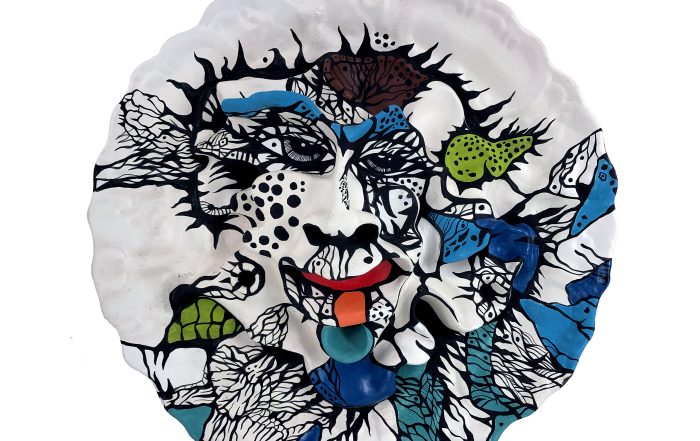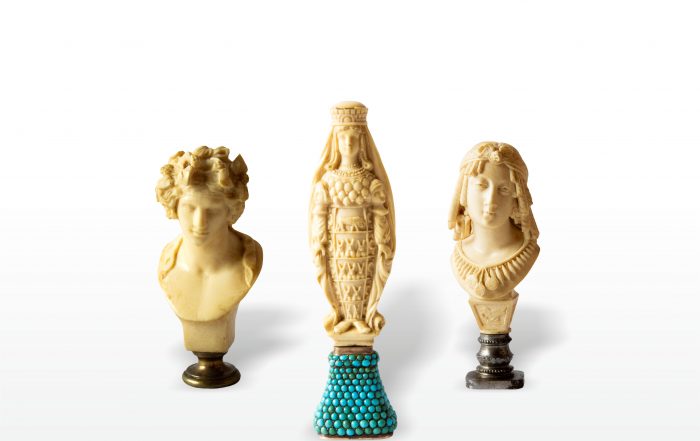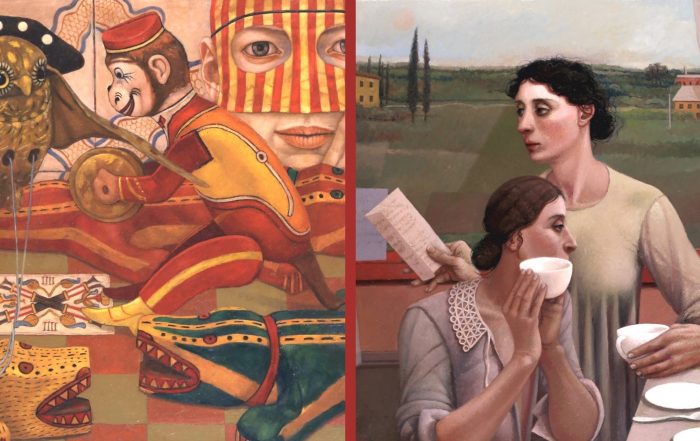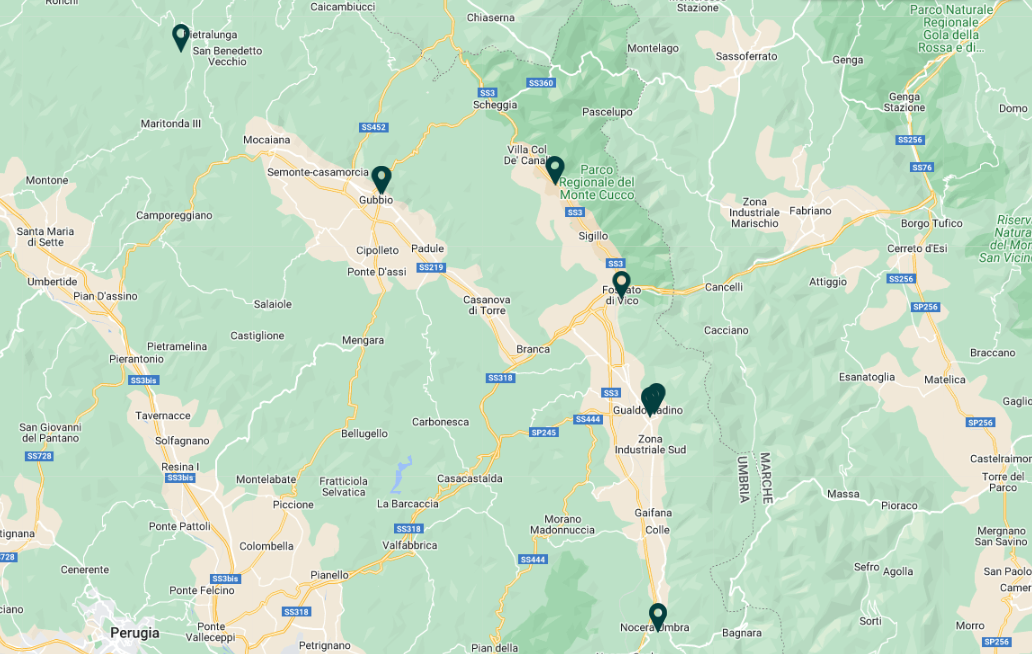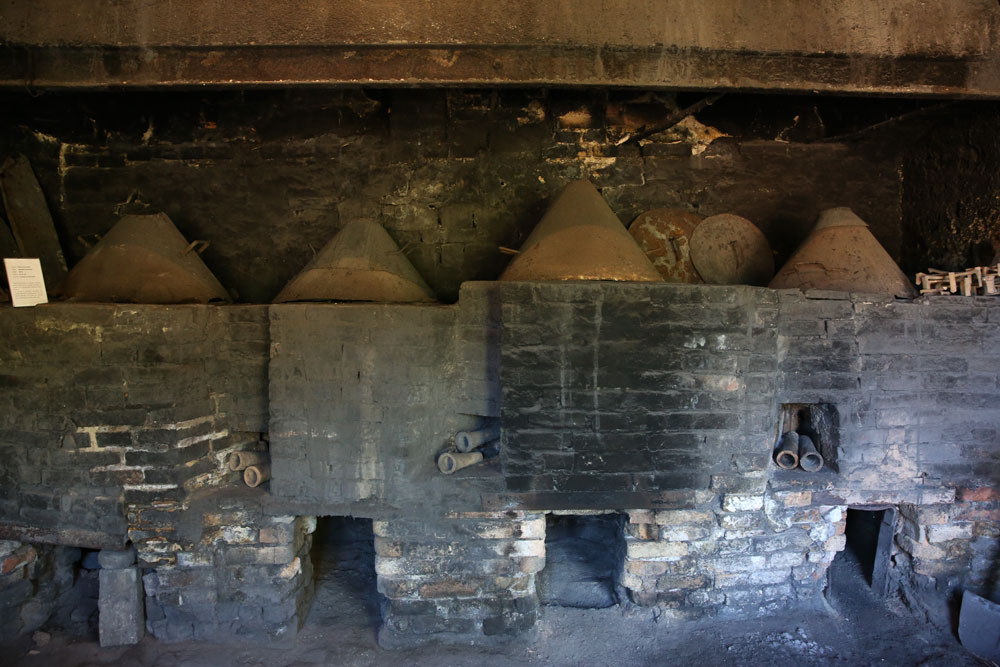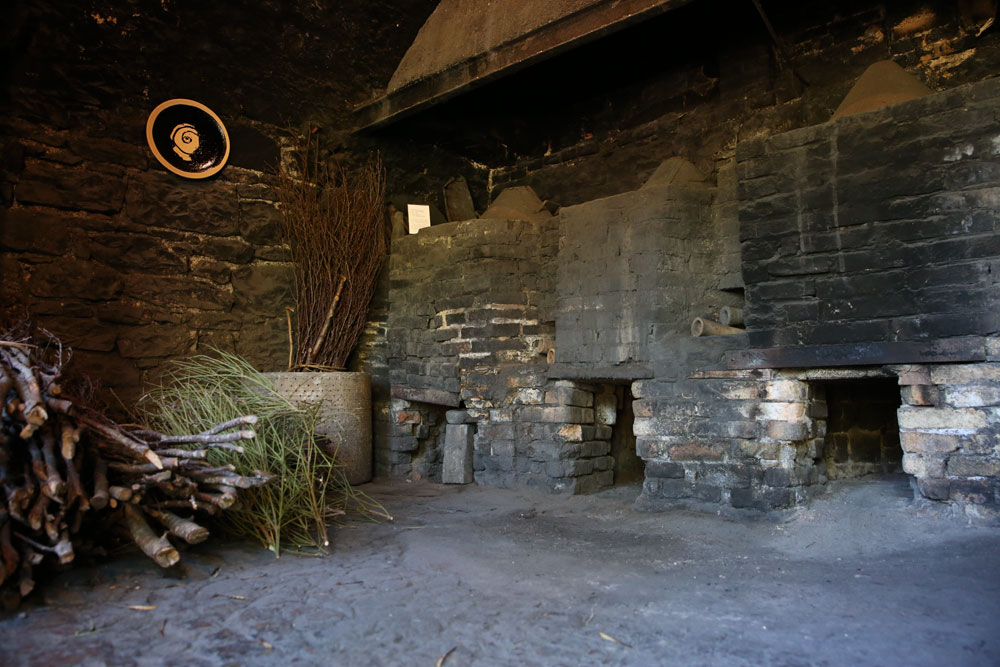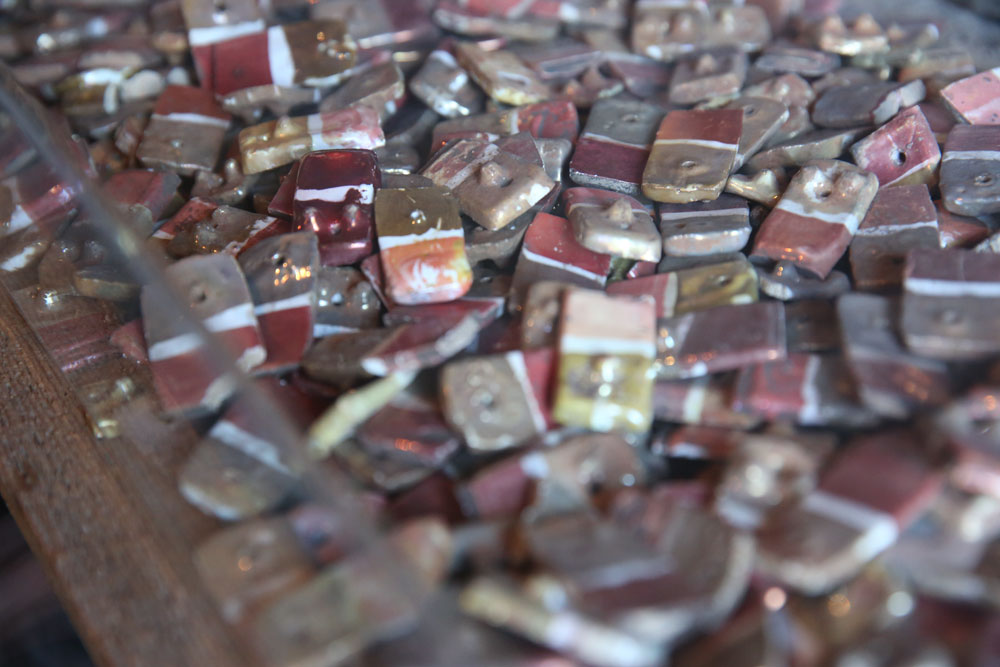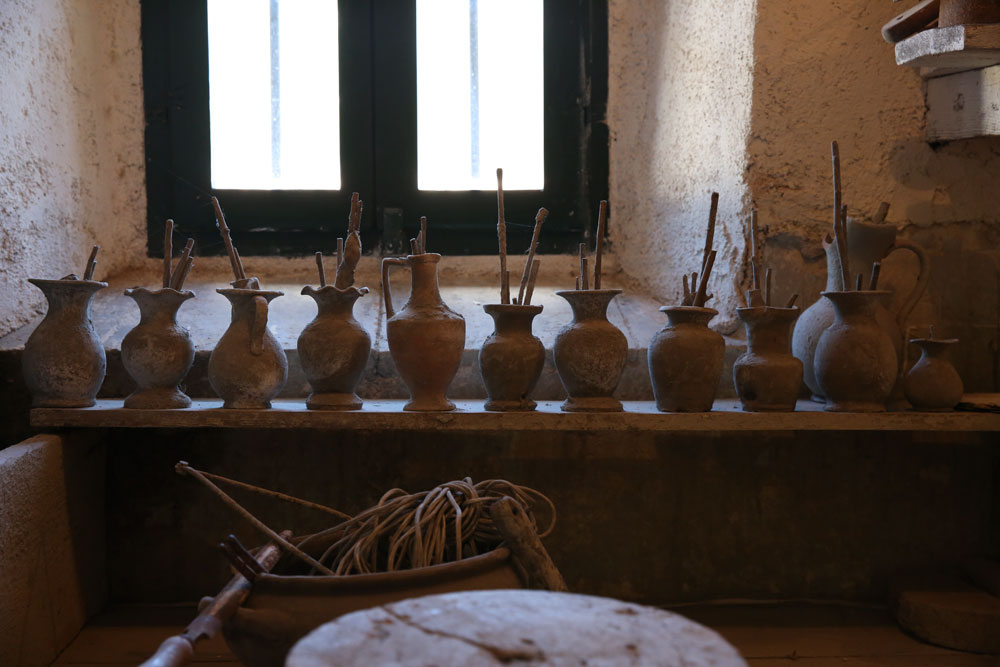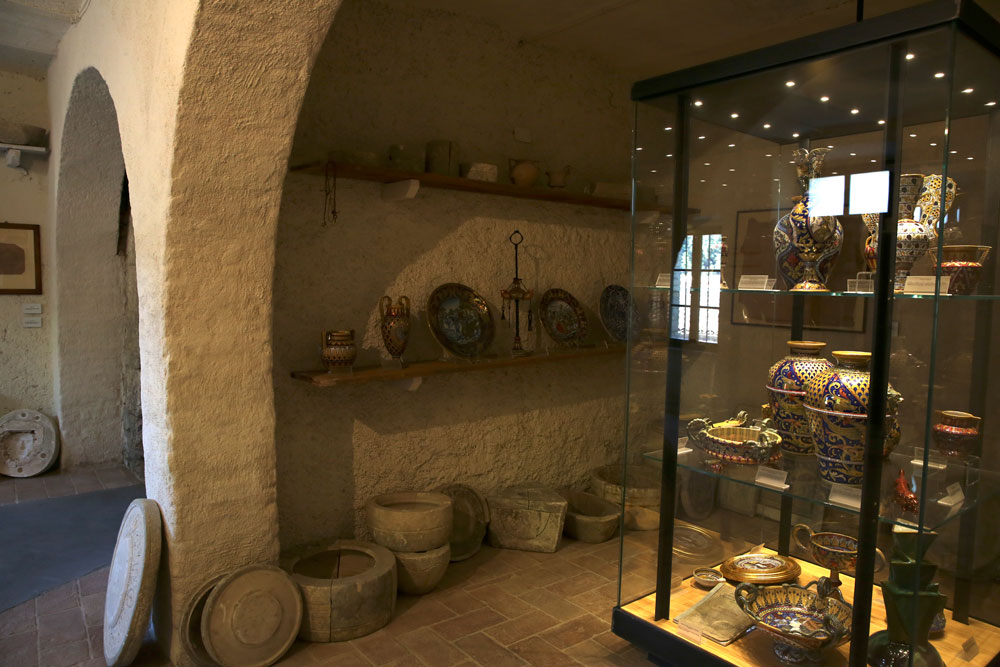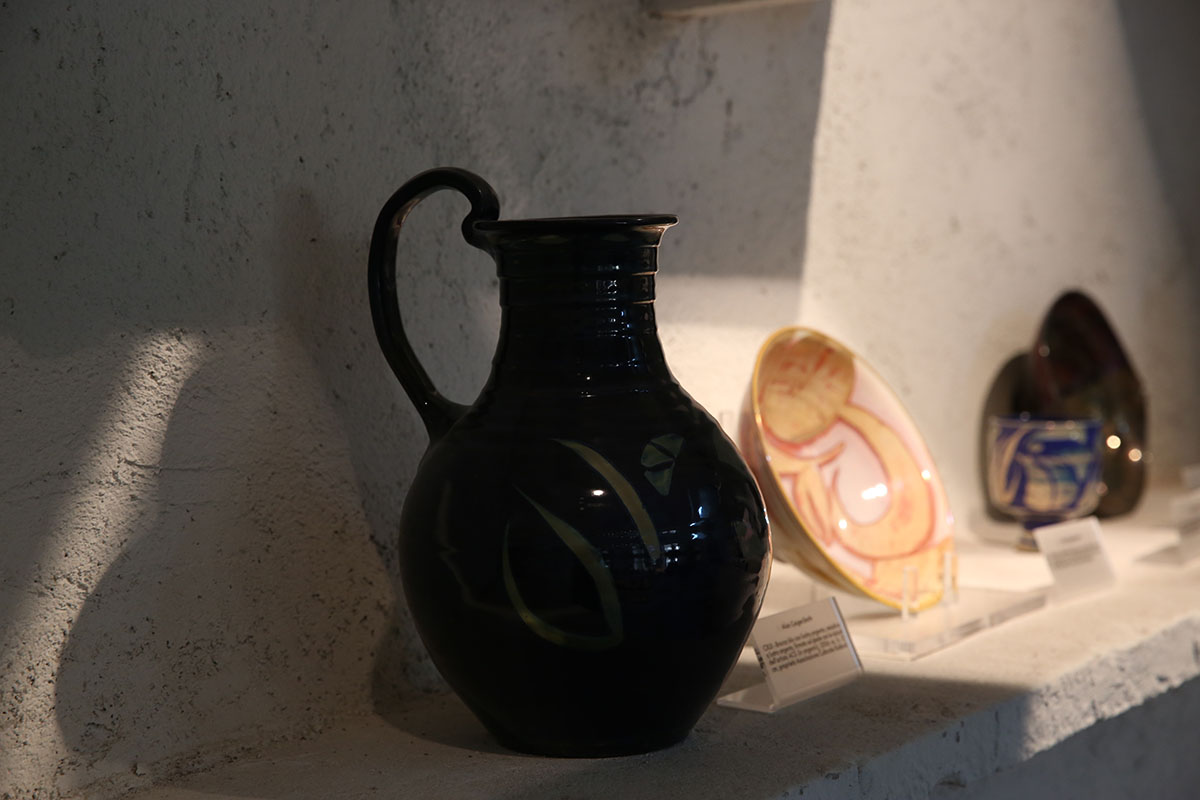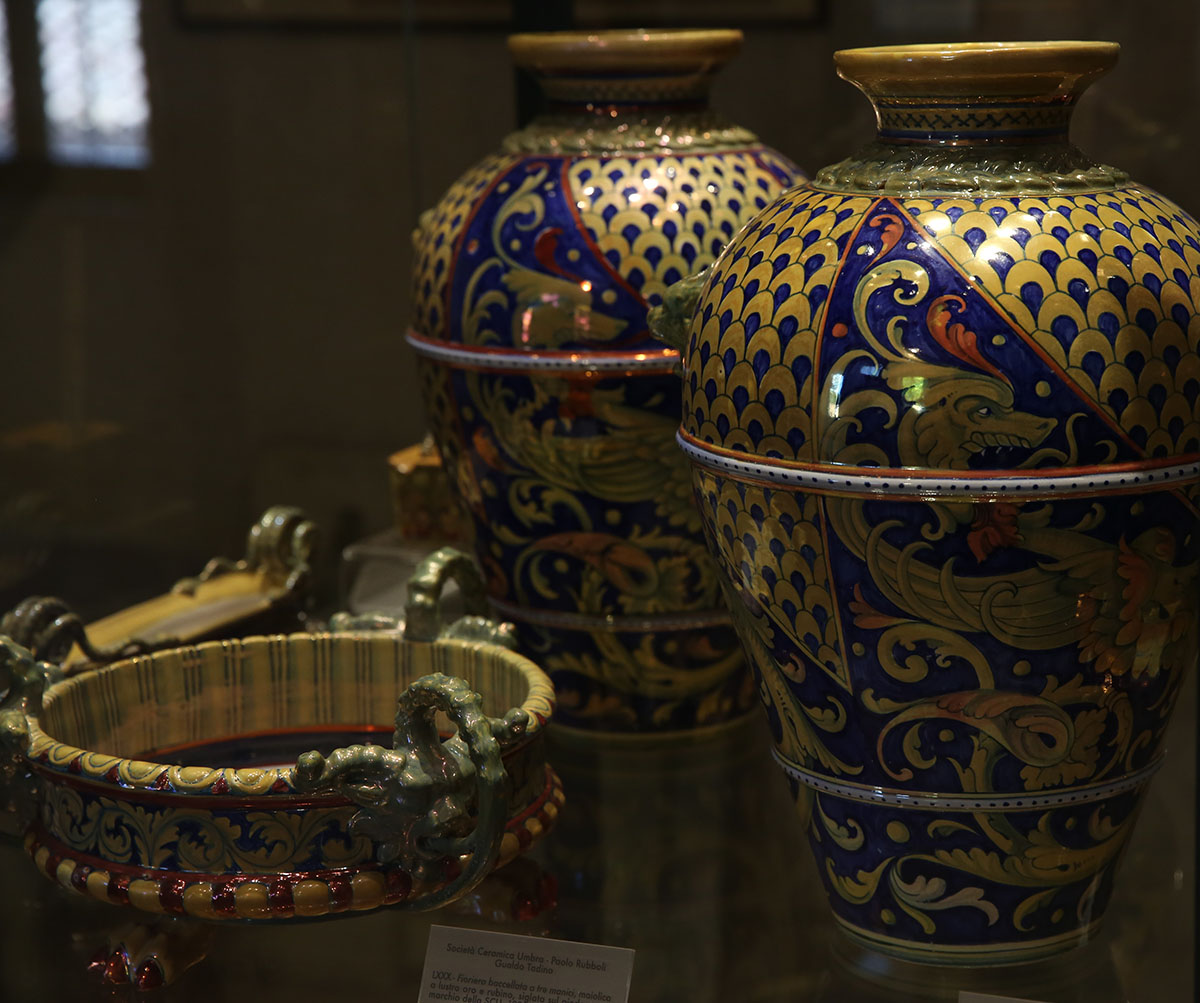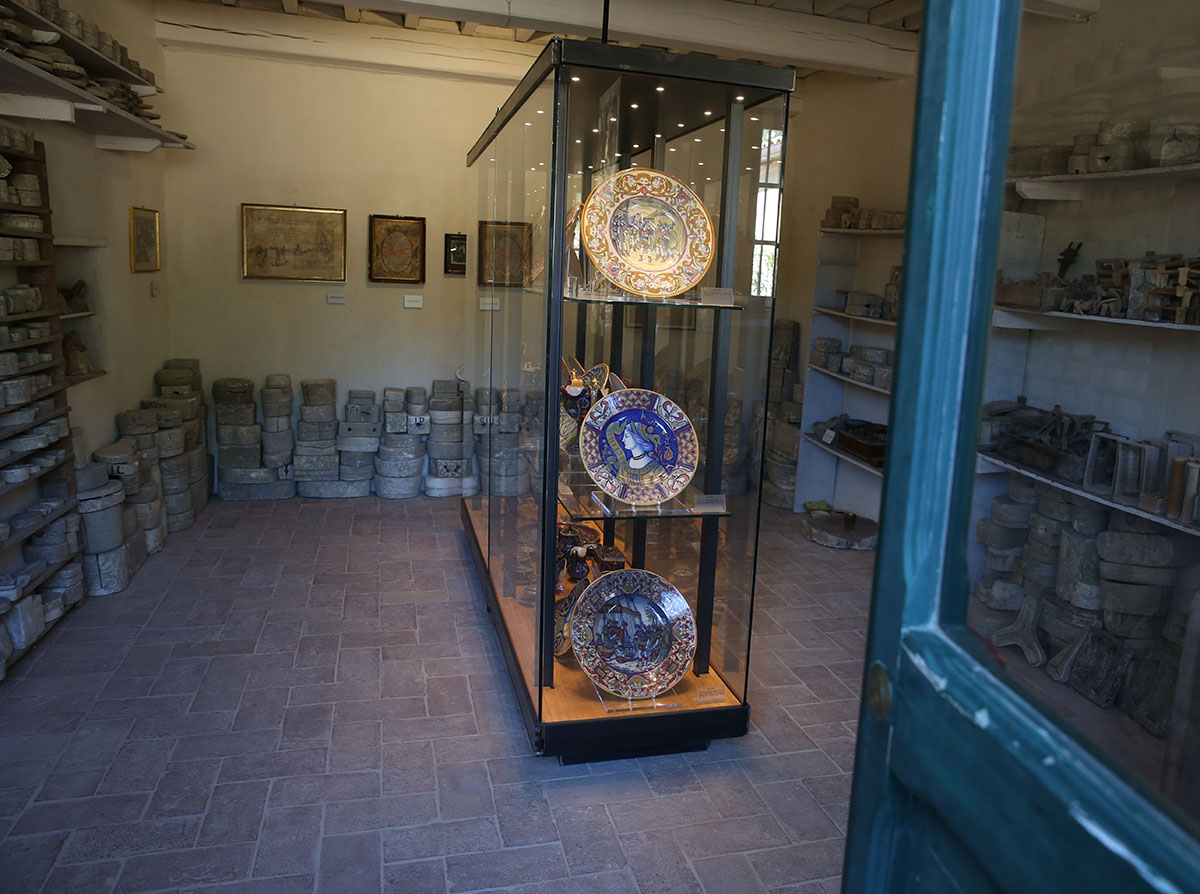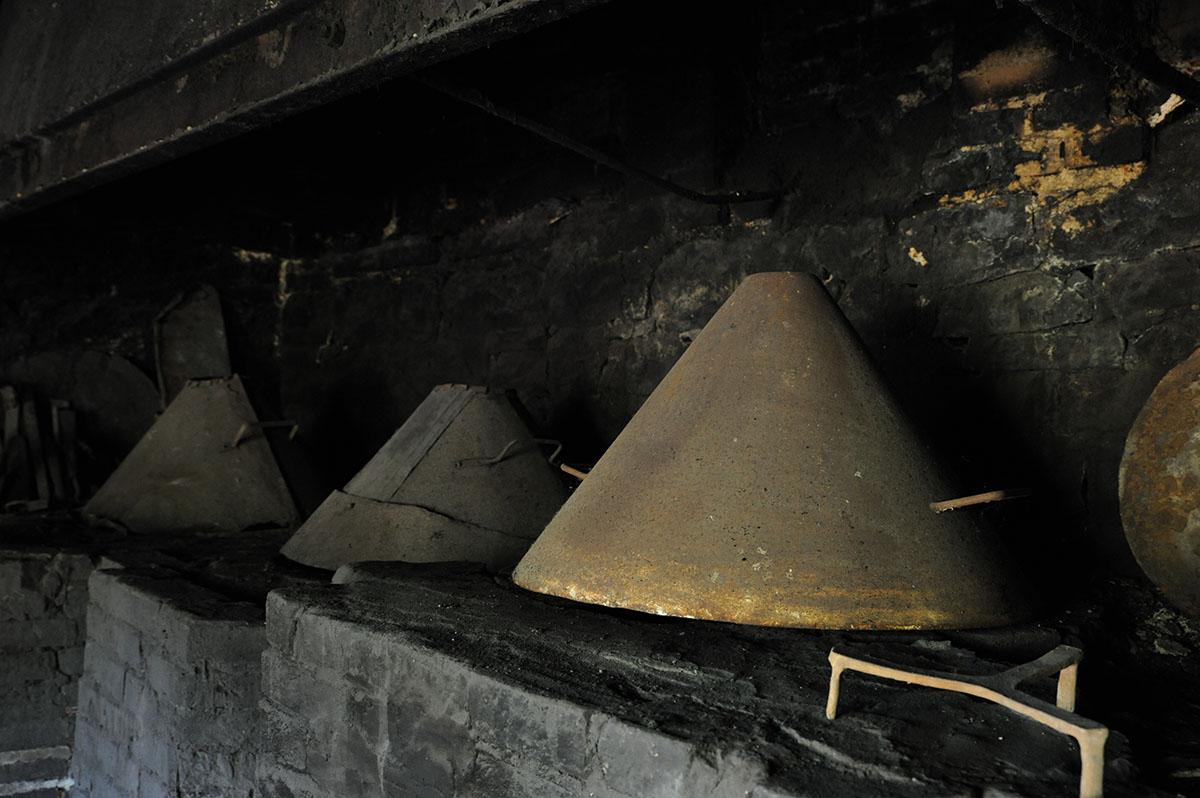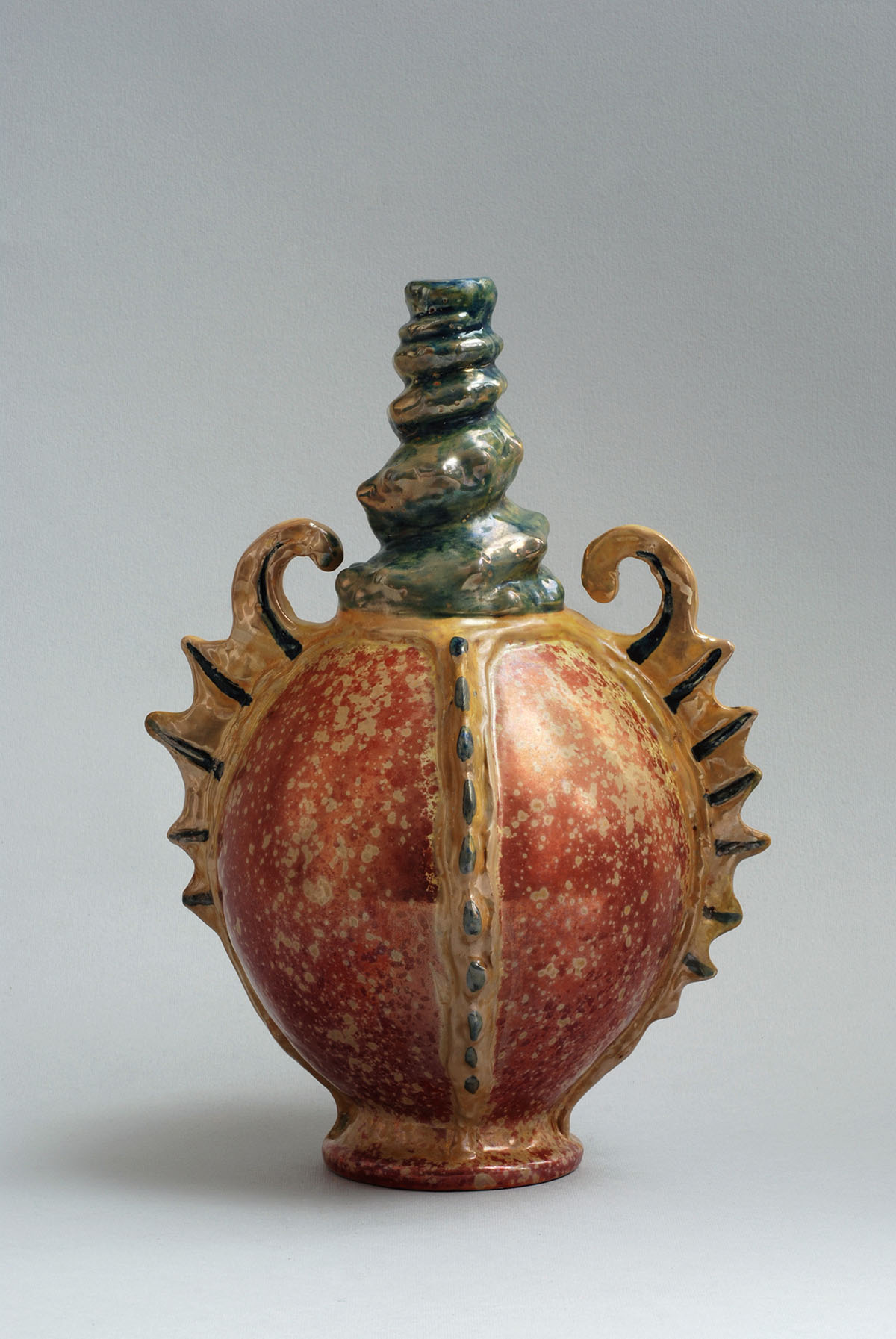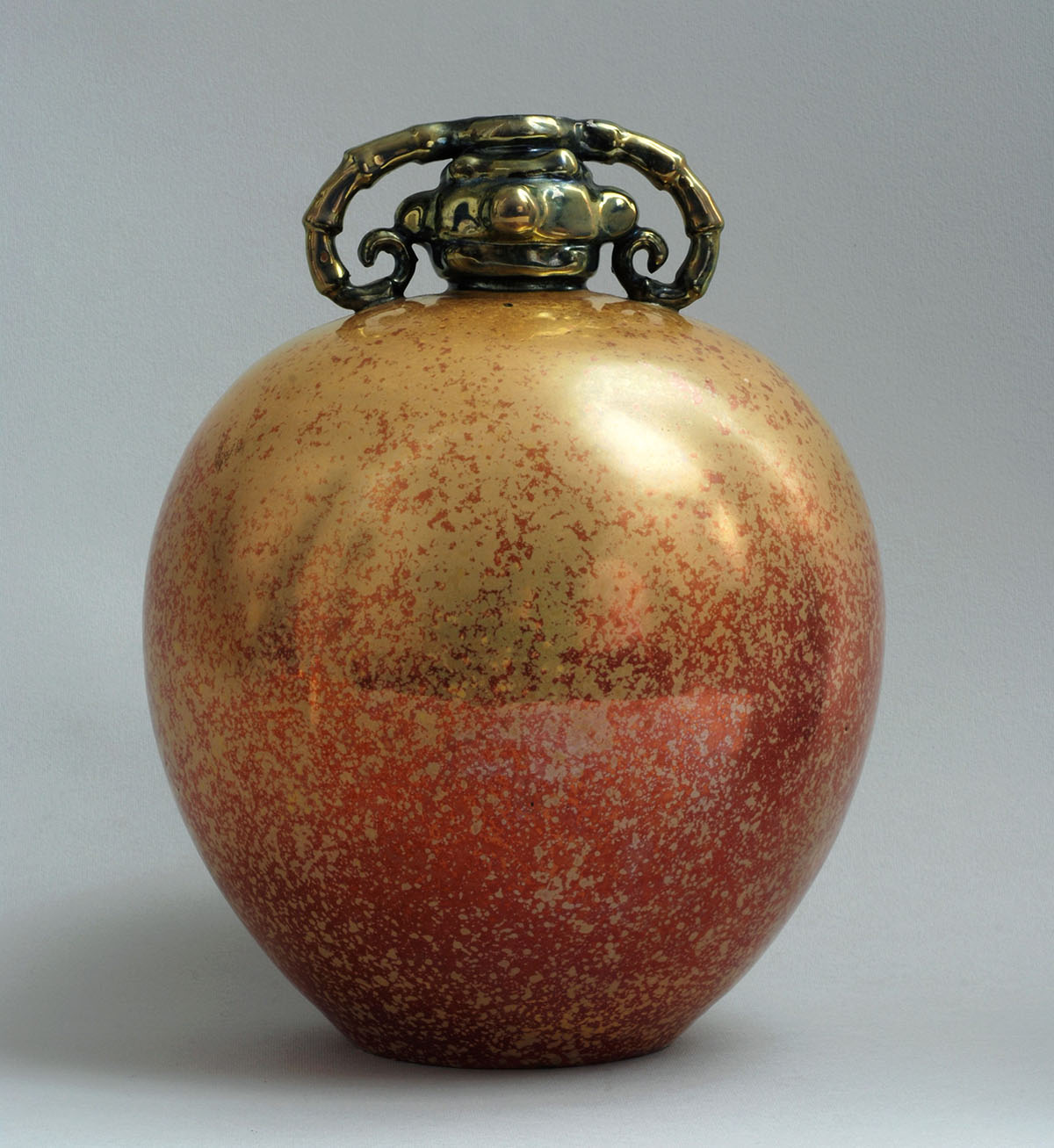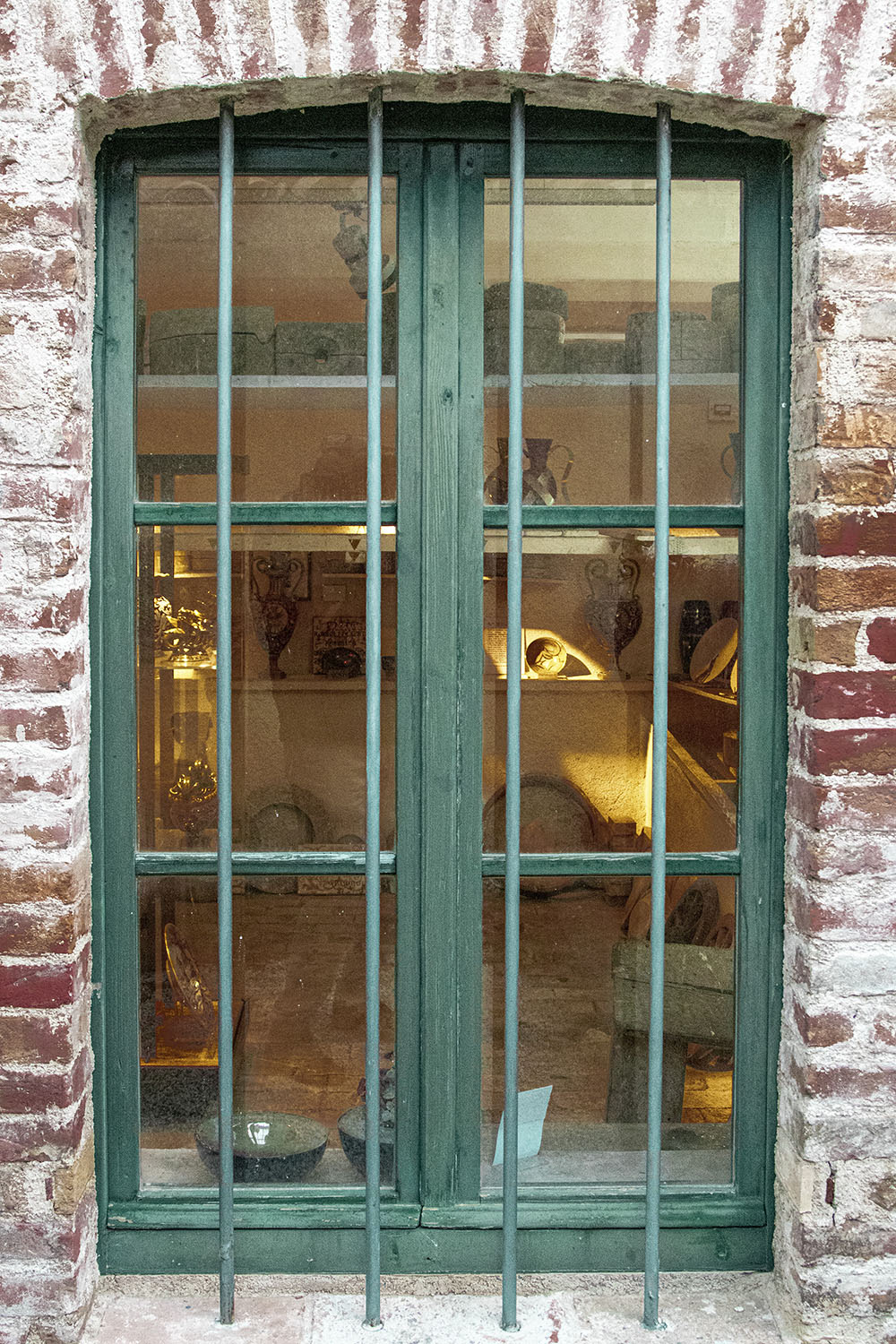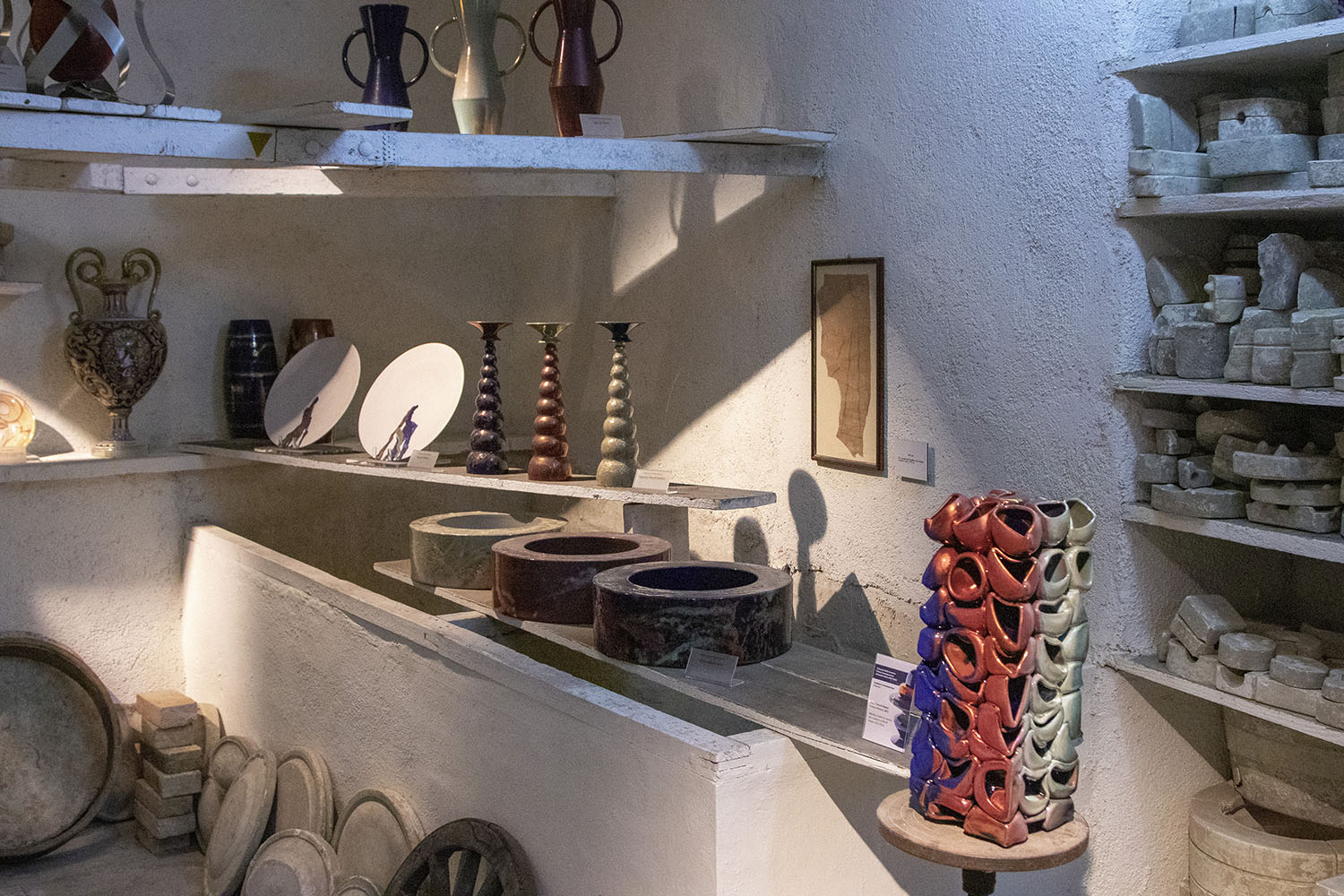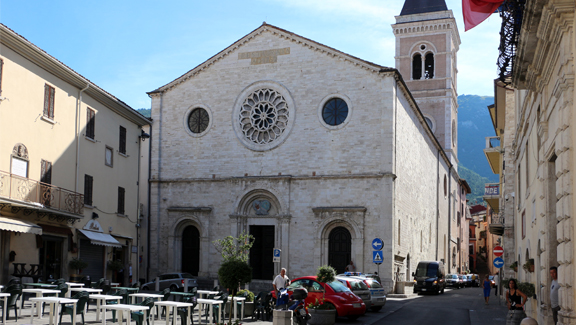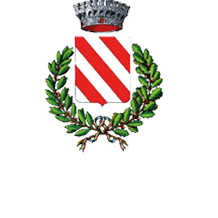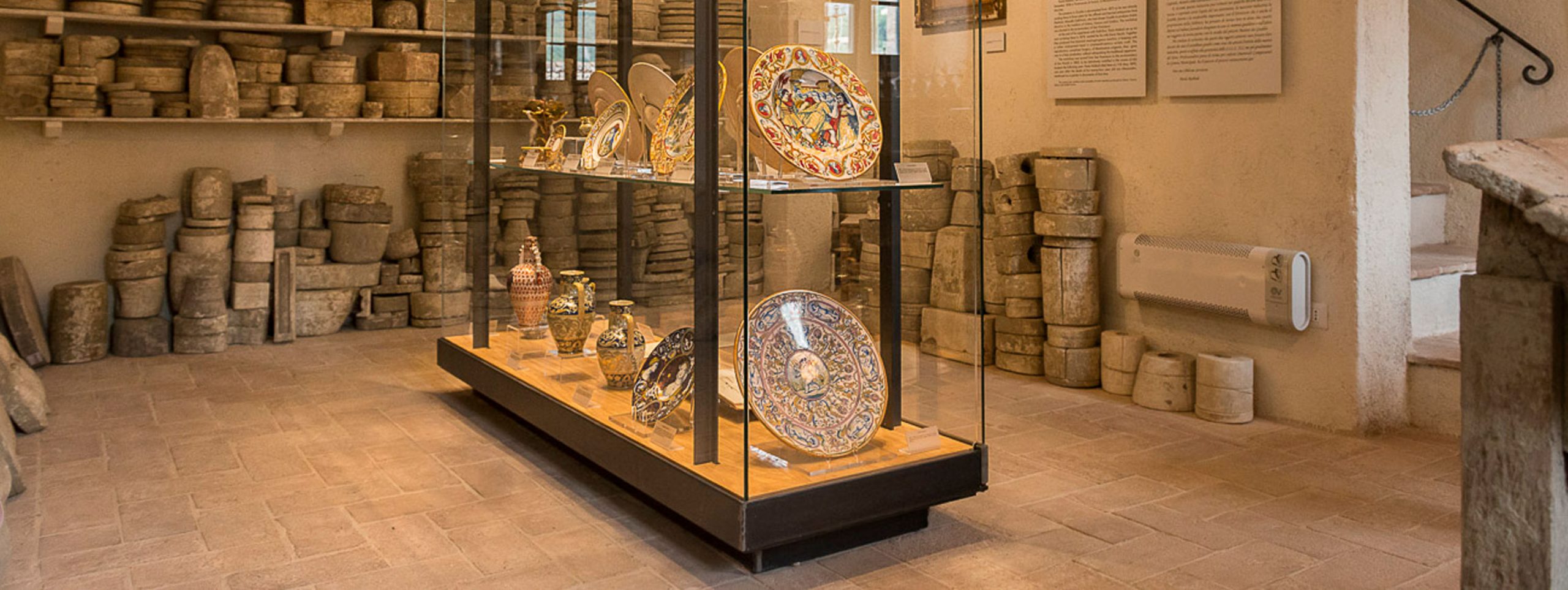
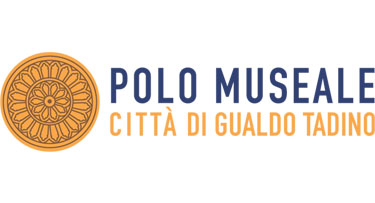
NEWS
IVANO CALCAGNO
IVANO CALCAGNO Jungle Life A cura di Catia Monacelli 22 ottobre – 6 gennaio 2022 Museo Civico Rocca Flea, Gualdo Tadino (Pg) Inaugurazione venerdì 22 ottobre ore 11.00 Cosa sta succedendo al nostro pianeta proprio [...]
ARTE, FUOCO E CERALACCA
ARTE, FUOCO E CERALACCA I sigilli della collezione Francesco Allegrucci A cura di Anna Nancy Rozzi 23 ottobre 2021 – 30 gennaio 2022 Inaugurazione sabato 23 ottobre ore 11.00 La pratica di sigillare esiste dall’antichità più [...]
LANI IRWIN – ALAN FELTUS
A Gualdo Tadino la grande pittura di figurazione americana SI VEDE IL SILENZIO LANI IRWIN – ALAN FELTUS A cura di Catia Monacelli Nella Chiesa monumentale di San Francesco fino al 6 gennaio 2022, è possibile ammirare [...]
THE MUSEUM
The Rubboli Factory Museum, located in the Municipality of Gualdo Tadino, was opened, in 2015, on the site of the 19th-century lustre-work factory, and houses the ancient muffle kilns manufactured according to the Renaissance design described in the treatise of Cipriano Piccolpasso, dated 1558. The original manufacturing equipment, which includes potter’s wheels, vats, shelves, kilns, as well as moulds, tools, oxides and pigments, constitutes a genuine example of histoire événementielle thanks to the authenticity of its recreation of a hundred and fifty year-old work environment. The Rubboli workshop specialised in the manufacture of gold and ruby lustre ceramics, faithful reproductions, both technically and stylistically, of those produced in the Renaissance by the celebrated ceramist Mastro Giorgio Andreoli (Intra, 1465-70 – Gubbio, 1533). The factory was founded by Paolo Marino Rubboli (Fiorenzuola di Focara, 1838 – Gualdo Tadino, 1890) who was a pioneer of the 19th century revival of lustre work. More than likely, his elder brother, Vincenzo Rubboli (Fioenzuola di Focara, 1835 – Rome, 1896) also played an important role in the establishment of the enterprise when, while he was at Fabriano in the Miliani factory, he wrote to the Ferniani factory in Faenza, offering them the formula for a technique of metallic glazing which had already been tried out successfully. Paolo Rubboli settled in Gualdo Tadino in 1875 and began working in the former Monastery of San Francesco. Later, Paolo took over the business, maybe with the financial assistance of his brother, and succeeded in establishing a reputation for the manufacture of highly-valued Renaissance revival ceramics using the recently rediscovered technique which had previously been lost for two and a half centuries. Working alongside him in this enterprise was his third wife, Daria Vecchi Rubboli (Fabriano, 1853 – Gualdo Tadino, 1929) who shared his passion and was party to the secrets of the workshop, without which the lustre could not have been produced. The Rubboli Museum is laid out in the old 19th century factory premises and features an important collection of their lustre works ranging from 1878 to the 1960s, as well as some notable works from other ceramic factories of the same period. There are four exhibition rooms in the Museum each one dedicated to a different stage in the production process: throwing, modelling, firing and glazing. According to the English scholar, Alan Caiger-Smith, who is considered to be the greatest expert on lustre technique, “ the Rubbolis’ muffle kiln is probably the last surviving example of this type of kiln for metallic glazing in the world”.
CONTACTS
Museo Opificio Rubboli
Via G. Discepoli 16 – Gualdo Tadino (PG)
075 914 2445
GALLERY
Open on Friday, Saturady, Sunday and Non-working Days
10.00 – 13.00 / 15.00 – 18.00
Closed on the 25th of December and on the 1st of January
Polo Museale single ticket: 6,00 €
One ticket for all the museums.
Museo Opificio Rubboli Full price: 5,00 €
Museo Opificio Rubboli Reduced: 3,00 €
Reduced for people from 7 to 18 years old.
Reduced for university students and over 65s

